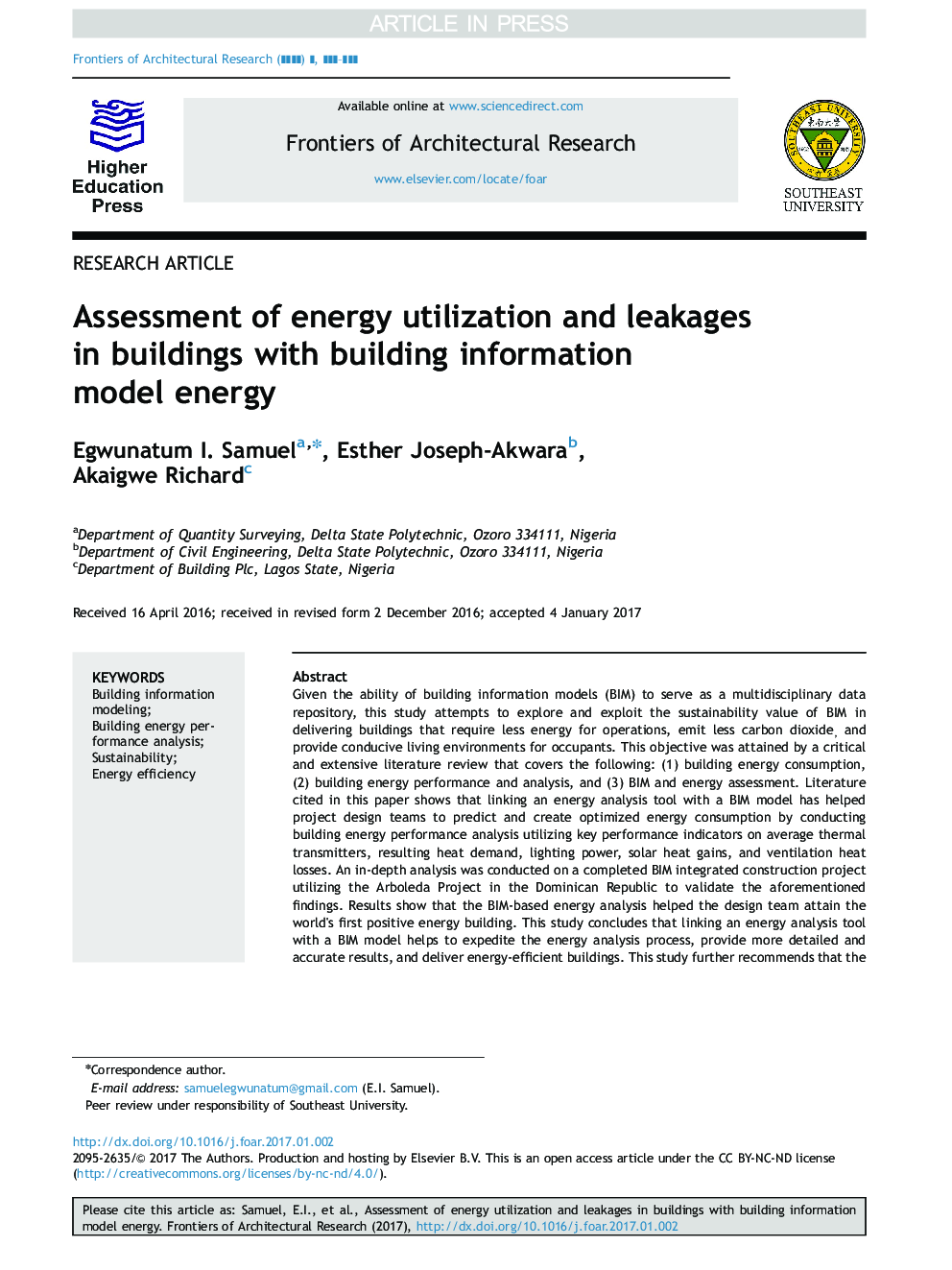| Article ID | Journal | Published Year | Pages | File Type |
|---|---|---|---|---|
| 6742552 | Frontiers of Architectural Research | 2017 | 13 Pages |
Abstract
Given the ability of building information models (BIM) to serve as a multidisciplinary data repository, this study attempts to explore and exploit the sustainability value of BIM in delivering buildings that require less energy for operations, emit less carbon dioxide, and provide conducive living environments for occupants. This objective was attained by a critical and extensive literature review that covers the following: (1) building energy consumption, (2) building energy performance and analysis, and (3) BIM and energy assessment. Literature cited in this paper shows that linking an energy analysis tool with a BIM model has helped project design teams to predict and create optimized energy consumption by conducting building energy performance analysis utilizing key performance indicators on average thermal transmitters, resulting heat demand, lighting power, solar heat gains, and ventilation heat losses. An in-depth analysis was conducted on a completed BIM integrated construction project utilizing the Arboleda Project in the Dominican Republic to validate the aforementioned findings. Results show that the BIM-based energy analysis helped the design team attain the world׳s first positive energy building. This study concludes that linking an energy analysis tool with a BIM model helps to expedite the energy analysis process, provide more detailed and accurate results, and deliver energy-efficient buildings. This study further recommends that the adoption of level 2 BIM and BIM integration in energy optimization analysis must be demanded by building regulatory agencies for all projects regardless of procurement method (i.e., government funded or otherwise) or size.
Related Topics
Physical Sciences and Engineering
Energy
Renewable Energy, Sustainability and the Environment
Authors
Egwunatum I. Samuel, Esther Joseph-Akwara, Akaigwe Richard,
